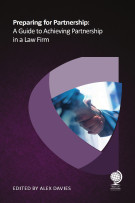
Life Cycle of a Family Business is like a wonderful Gem; nine Contributors look at Family Businesses from eight different angles and stages. Each one from the Prism of their own expertise. Together this becomes a Diamond, condensed, shining and precious.
In the 1st Stage (The three circle paradigm prism) we learn about the uniqueness of a family business which is owned (and run) by a heterogenic group of people which are related by blood, but otherwise might be very different. This needs a “Stewardship” mind as well as a firm framework and a lot of planning; actually a few plans which are interdependent.
In the 2nd Stage (The family relationship prism) we learn about the emotional side of the family business and how good communication, gratitude, expressed love, common family vision and to make room for togetherness as well as individualism is important. Multidisciplinary approach for all people involved with the family is key. The chapter ends with this important statement: “This multidisciplinary approach can produce successful outcomes when everyone – family members, business stakeholders and advisers – is working in harmony for the good of all. In fact, that is what much of this book is about.”
Stage 3 is all about Challenges and Boards (The structural prism). We all know that a good governance and board makes all the difference. A good board does not happen automatically. This chapter introduces the process of how to build and advance an effective board. It does not happen overnight, but happens in stages. Through examples we get introduced to various designs of boards.
What about Risk? In this chapter (Stage 4; The risk prism) the author talks about four main Risk categories, in particular Risk appetite, Risk attitude, Risk strategy and Risk management in the environment of a family business. In these days of “black swans” it is crucial for family businesses to have forward-looking, multifaceted systems of risk management in place.
Stage 5 looks at another risk; the risk of family feuds and divorces (The family feud prism). The damage such an event could do to the family business should not be underestimated. Lots of challenges to prepare for this unexpected and unfortunate risk. Family Courts very frequently drag the business into the divorce negotiations. A situation one should avoid. What happens in the divorce has also long-term effects on the family business and its next generation of leaders. Every stakeholder in the family business is exposed. This chapter shows actual court cases to describe the traps and pitfalls one should be aware of when the ‘black swan’ happens in the family and not in the business.
The 6th Stage touches on the uniqueness of a family business – (The longevity prism). If you are the steward of your family business you can and should plan for longevity, 50 to 100 years at least. You are not “in it” for the fast buck, but manage your business in an entrepreneurial spirit, also as successor generation. Relying on the past is not good enough. One needs entrepreneurialism and intrapreneurialism. Also an established business needs to reignite and rediscover the entrepreneurship the founding generation had in the first place, when all the business success was only a dream.
In the 7th Stage (The advisor prism) we learn that not every family member is suited to be the successor to the business leadership or to have any role beyond being a shareholder. The selection process needs thorough preparation by an advisor and the decision process inside the family business needs to be well designed. Often there are no structures in place when the advisor is hired and the process includes also ignoring the obvious and rather than finding the correct structure from “out of the box” thinking. First the advisor needs to get to know the family and its values, before the process of successor finding can even start.
The 8th Stage is about the 100-year families (The 100-year prism), the ones that make “it” beyond the third generation; the exception. Of course the success beyond the 3rd Generation depends on the result of the choices the first and second took. Cooperation and collaboration has to be trained and governance, which becomes relevant in the 3rd Generation, has to be initiated. The business will look different from the initial business. Change is inevitable; in the business and in the family. “Generative families see themselves as being on a journey, continually reinventing themselves […]”. Transformations come in various ways: Harvesting, Pruning, Diversifying and Grounding. The author explains these transformations. Without cultivating and strengthening the family relationships the family will not succeed to transition beyond the third generation. “The family enterprise rests on twin pillars, separate and independent: the family and the enterprise.”
This book manages to touch all the important facets and tools that make a family business the long-lasting and special place where the family can flourish and be a role model for generations to come. Every Next Gen of a business family needs to read this book BEFORE joining the family business.
,





